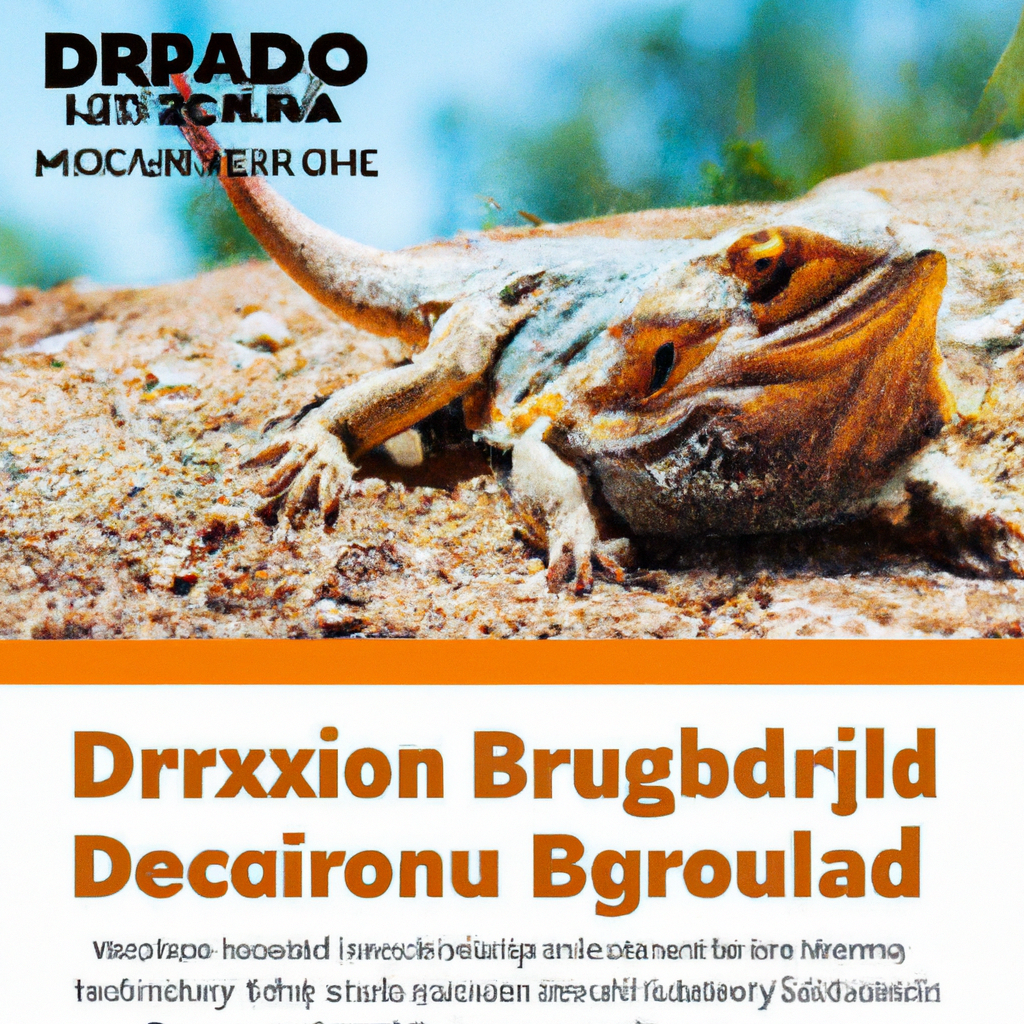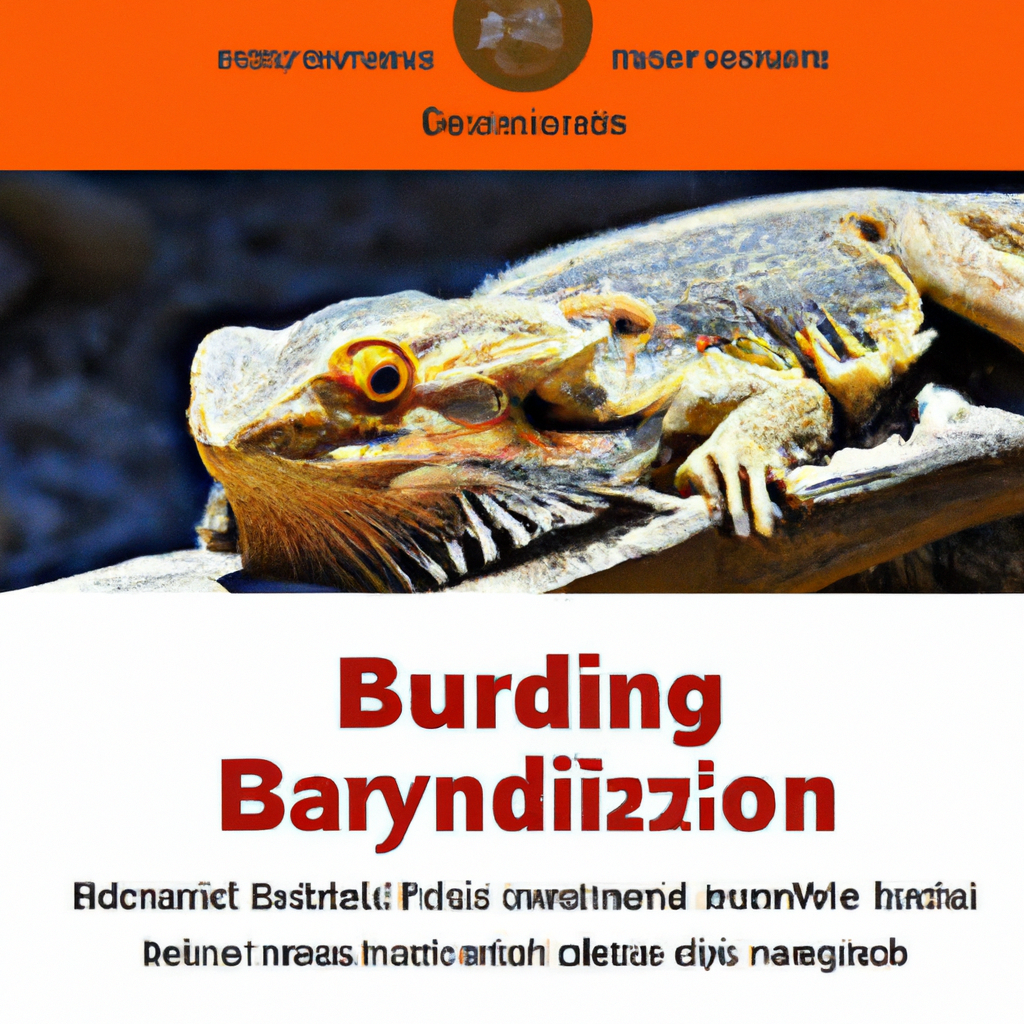Australia is home to a unique and fascinating creature known as the Bearded Dragon. With its spiky appearance and captivating personality, this reptile has captured the hearts of many reptile enthusiasts around the world. From its peculiar diet to its ability to change colors, the Bearded Dragon in Australia is truly a remarkable sight to behold. In this article, you will discover the wonders of this extraordinary creature and gain a deeper understanding of its intriguing characteristics. Are you ready to embark on a journey into the world of the Bearded Dragon in Australia? Let’s explore together!

Habitat
Bearded dragons, scientifically known as Pogona, are found in the dry and arid regions of Australia. These unique reptiles have adapted to thrive in this challenging environment, making them well-suited to the harsh conditions of the Australian outback.
Physical Characteristics
One of the most striking features of bearded dragons is their large size. On average, they grow to about 18 to 24 inches in length, with males typically being slightly larger than females. However, their size doesn’t compare to the impressive beard that gives these reptiles their name. The beard is actually a specialized display feature, which they can puff out and darken to communicate their mood or assert dominance.
In addition to their beard, bearded dragons also have scales and coloration that help them blend into their surroundings. Their scales provide protection from predators while their colors, which can range from brown and tan to vibrant oranges and reds, allow them to camouflage themselves against the desert landscape.

Diet and Feeding
Bearded dragons are omnivorous creatures, meaning they have a diverse diet. In the wild, their diet consists of insects, such as crickets, roaches, and mealworms, as well as various vegetation like leafy greens, fruits, and flowers. This varied diet ensures they receive the necessary nutrients to thrive in their habitat.
One unique behavior exhibited by bearded dragons is brumation, which is similar to hibernation in mammals. During periods of brumation, these reptiles reduce their activity levels, metabolism, and feeding frequency. This natural response to cooler temperatures and scarcity of food helps them conserve energy and survive in their environment.
Reproduction and Lifespan
Sexual dimorphism is evident in bearded dragons, with males typically displaying larger sizes and more vibrant coloration compared to females. Males also have larger abdomen scales that are used during courting rituals.
When it comes to reproduction, female bearded dragons lay clutch sizes of about 20 to 30 eggs, which they bury in sand or soil for incubation. The incubation period lasts for approximately 55 to 75 days, after which the hatchlings emerge.
As for their lifespan, bearded dragons can live for an average of 10 to 12 years, with proper care and maintenance. However, some well-cared-for individuals have been known to live up to 15 years or longer.

Behavior and Temperament
Bearded dragons exhibit various behaviors and have intriguing temperaments. They are known to be territorial creatures, often displaying dominance over their designated area. This behavior is particularly evident in males, who may engage in head bobbing and arm-waving displays to assert their dominance.
Basking is an essential behavior for bearded dragons, as they require UV light and heat to regulate their body temperature. They can often be found sunbathing in the morning to absorb heat, and later in the day, seek shelter in hiding spots to cool off.
In terms of social interactions, bearded dragons are generally solitary creatures. However, they can tolerate the presence of other dragons in captivity, provided they have enough space and resources. It’s important to provide ample hiding spots and separate enclosures when housing multiple dragons to avoid any potential aggression.
Pet Care and Maintenance
If you’re considering owning a bearded dragon as a pet, it’s crucial to understand their housing requirements, temperature needs, and feeding guidelines. Providing them with proper care will ensure they live a healthy and happy life.
housing for bearded dragons should mimic their natural habitat as much as possible. A spacious enclosure with secure walls and a screened top is essential to prevent escape and maintain proper ventilation. The enclosure should include a basking area with a heat source, such as a basking lamp or ceramic heater, and a cooler area for the dragon to retreat to when needed.
Temperature and lighting are critical aspects of bearded dragon care. Provide a temperature gradient within the enclosure, with a basking spot temperature around 95°F (35°C) and a cooler side around 80°F (27°C). Additionally, UVB lighting is necessary to provide the required UV rays for Vitamin D synthesis.
bearded dragons should be fed a balanced diet of insects, such as crickets and roaches, as well as various leafy greens and vegetables. Dusting their food with calcium and vitamin supplements is essential to prevent nutritional deficiencies. Fresh water should also be available at all times, although they primarily derive their hydration from their diet.

Potential Health Issues
Like any living creature, bearded dragons are susceptible to certain health issues. One common ailment is metabolic bone disease, which occurs due to a lack of calcium and proper UVB exposure. This condition can lead to weakened bones, deformities, and even death. Regular veterinary check-ups and a proper diet with calcium supplementation can help prevent this disease.
Respiratory infections can also affect bearded dragons, often caused by inadequate husbandry, such as improper temperature and humidity levels. These infections can impact their respiratory system and lead to severe health issues. Maintaining clean and appropriate living conditions can help reduce the risk of respiratory infections.
Parasite infestations, such as mites and intestinal parasites, can also occur in bearded dragons. Regular fecal examinations and proper hygiene practices can help identify and prevent these potential issues.
Importance of Conservation
bearded dragons are classified as a vulnerable species, and their conservation is crucial to ensure their long-term survival. Habitat destruction due to urbanization and agriculture poses a significant threat to their population. Additionally, the capture and trade of these reptiles as exotic pets can also negatively impact their numbers in the wild.
To combat these threats, various conservation efforts are in place. This includes protected areas and reserves to safeguard their natural habitat, as well as educational programs to raise awareness about their importance and proper care in captivity. It’s vital that we continue to support these initiatives to protect the bearded dragon population for future generations.

Interesting Facts
The name “bearded dragon” originates from their distinctive beard, which can be flared out as a display of aggression or defense. This beard turns black when the dragon is excited, stressed, or threatened, warning potential predators or rivals to back off.
Bearded dragons have the ability to change their color. They can darken or lighten their hues to adjust to their surroundings, camouflaging themselves amongst rocks and desert vegetation. This adaptation helps them blend in and avoid detection by predators in their native habitat.
Head bobs are a unique form of communication among bearded dragons. Males often perform head bobbing displays to assert dominance or communicate with other dragons. It’s a fascinating behavior to observe and adds to the overall charm of these remarkable reptiles.
Misconceptions and Popular Myths
Contrary to popular belief, bearded dragons do not possess fire-breathing abilities. While they have an impressive beard and can display aggression, they have no such mythical powers. Their beard is simply a display feature used for communication and intimidation.
Another misconception is that bearded dragons are aggressive and pose a danger to humans. In reality, they are typically docile creatures with relatively mild temperaments. However, as with any animal, they may bite if they feel threatened or stressed. Proper handling and respect for their boundaries are essential to ensure a positive interaction.
Lastly, the belief that bearded dragons are easy pets to care for is not entirely accurate. While they can make wonderful companions, they require specific housing conditions, temperature regulation, and a balanced diet. Providing adequate care and attention is essential for their well-being and longevity.
In conclusion, bearded dragons are fascinating reptiles native to the dry and arid regions of Australia. They possess unique adaptations that allow them to thrive in their environment. Whether in their natural habitat or as pets, these friendly creatures captivate us with their physical characteristics, behaviors, and engaging personalities. It’s important to understand their needs and support conservation efforts to ensure the continued survival of this remarkable species.